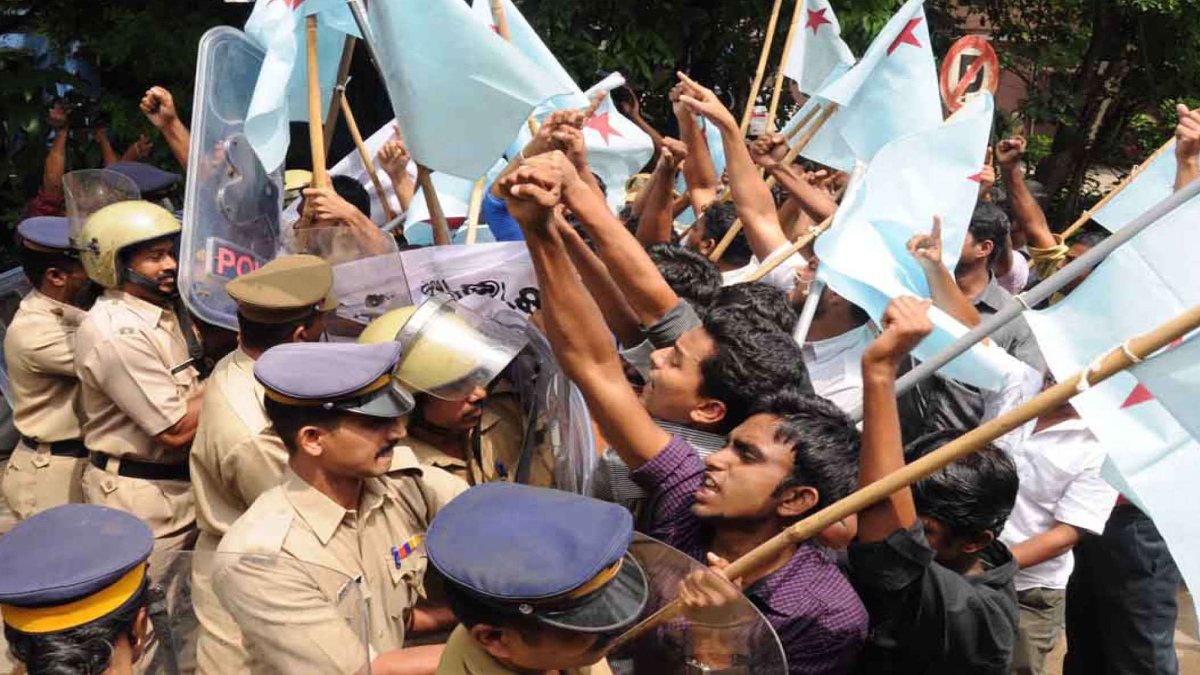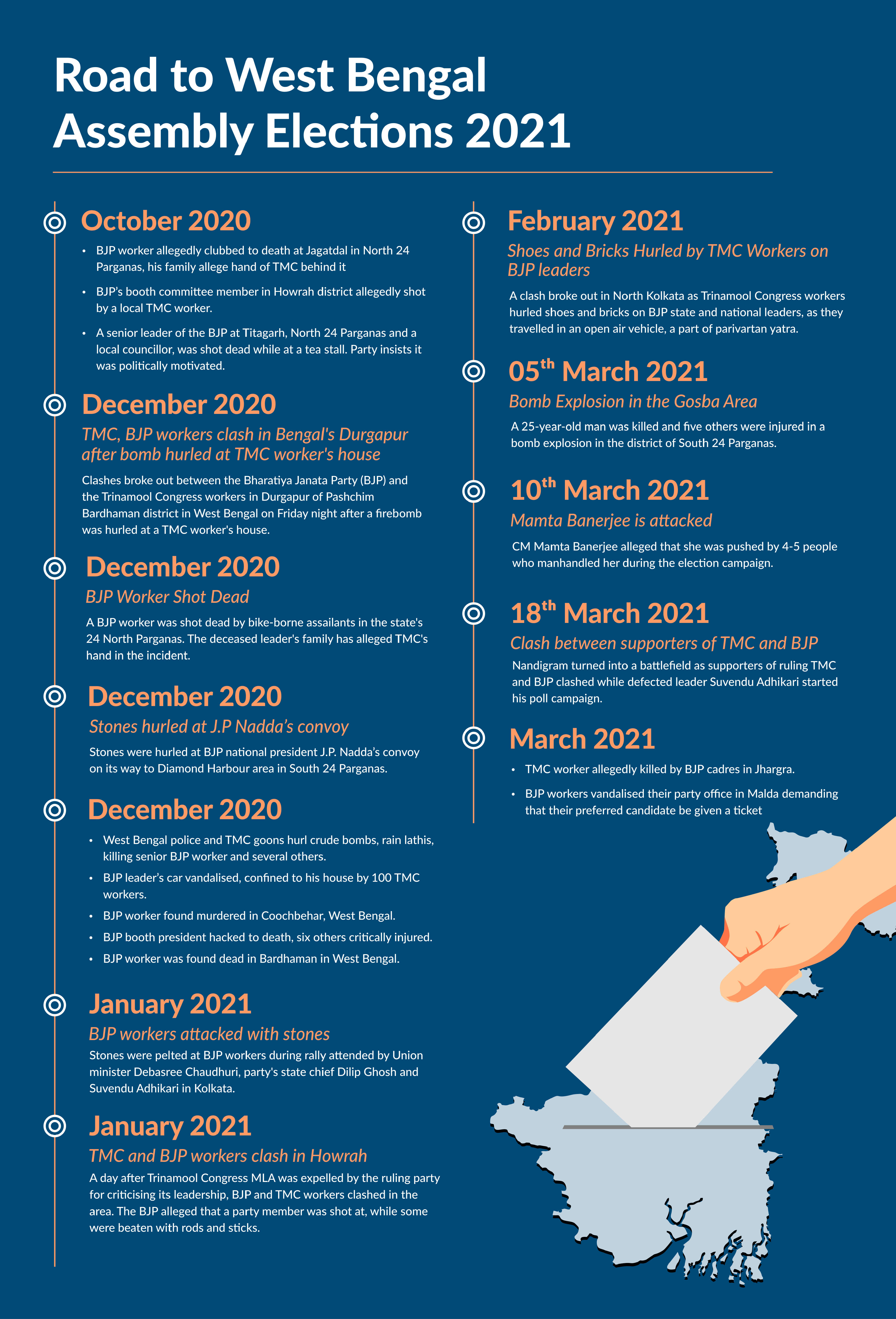


NEW DELHI: West Bengal has had a long and complicated relationship with electoral violence. While elections are simultaneously held in five states and Union Territories, if one scans media coverage, it would appear as though elections are only being held in West Bengal. Why is this? Why are all eyes on West Bengal? Since before the BJP’s rise to power during the 2019 Lok Sabha elections, the rivalry between the TMC and BJP led to significant poll-related violence across the state. Prior to this, the TMC shared a similar rivalry with the Left Front and before that, the Left shared one with the Indian National Congress (INC).
 Photograph by Creative Commons
Photograph by Creative Commons Photograph by Creative Commons
Photograph by Creative Commons Photograph by Creative Commons
Photograph by Creative Commons Photograph by Jhelumchowdhury
Photograph by Jhelumchowdhury
The violence tends to peak during election season, with the major players changing over the years. During the 1960s and 1970s, the violence was mostly between the Indian National Congress (INC), the Left Front (an alliance of Left parties that was in power in the state for over three decades), and Naxalites. However, after the TMC’s rise to power, the strife shifted to TMC and CPI(M). In recent years, the fight has been between the BJP and TMC.
One of the most infamous elections in the history of West Bengal was the 2018 panchayat elections. The ruling TMC won the election with a comfortable margin. However, they were accused of stealing ballot boxes, stamping ballot papers, and winning over 34 per cent of the seats without any competition, which is also the same as area capture. The highest number of uncontested seats were in Murshidabad, South 24 Parganas, Hooghly, Bankura, Purba Bardhaman, Paschim Bardhaman, and Birbhum districts. More than half of all election-related violent events during the time also took place in these districts.
Different phases of the panchayat elections were marred with high levels of violence. Even before voting started for the elections, during the filing of nominations, 10 times as many events of violence and twice as many fatalities were reported as compared to prior weeks. Due to ongoing reports of violence, threats, and intimidation against opposition parties and their supporters, the deadline was extended to April 23rd 2018.
Of all the violent events, most were instances of vicious attacks on civilians (including assault and murder), rioting, and armed battles between party members. What is also important to note is that despite such high levels of violence, only about 4 per cent of all reported instances had any form of police intervention.
As per National Crime Records Bureau (NCRB) data on past Lok Sabha and state elections and annual records, poll-violence and elections in West Bengal go hand-in-hand. During the 2003 panchayat elections, 76 people died (across political parties). Similarly, the 2013 panchayat elections also led to the death of 39 people, while in the 2018 elections, 29 political party members were killed.In the 2009 Lok Sabha elections, out of the total 5,315 poll-time offences registered in India, 18 per cent were in West Bengal. During the 2014 Lok Sabha elections, of the 16 political workers killed across India in poll-related violence, 44 per cent of them were in West Bengal. In a similar manner, data for 2019 also shows that of the 2,008 political workers who were injured, 1,298 (that is 64 per cent) were in West Bengal.
Another factor that is interesting to note is that while in most states across the country, electoral violence is recorded mostly before and on the day of polling, in West Bengal more instances of violence are observed in the period after polls are held. All-India data shows that during the 2009 and 2014 Lok Sabha elections 65 per cent and 74 per cent of violent events respectively were recorded in the pre-poll period. However, for West Bengal, the election period offences recorded after voting was over were 61 per cent during the 2009 elections and 44.68 per cent for 2014 elections.
